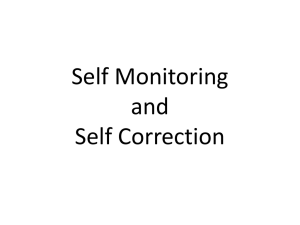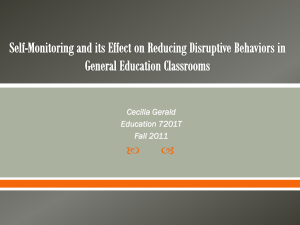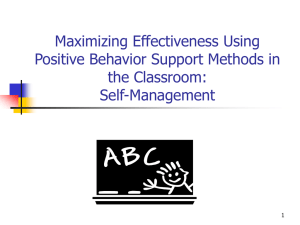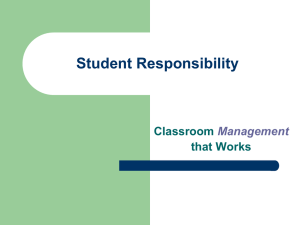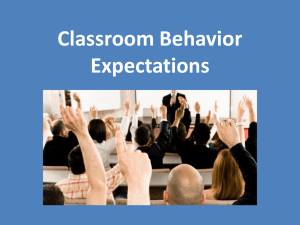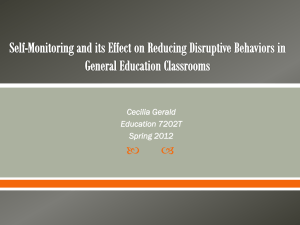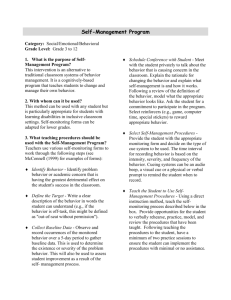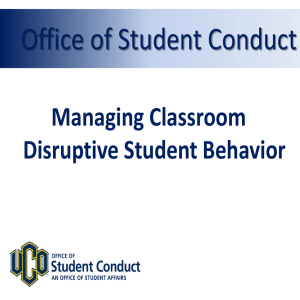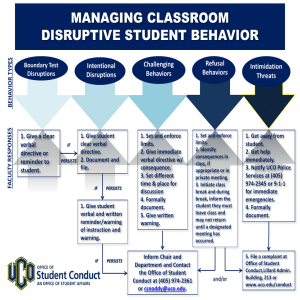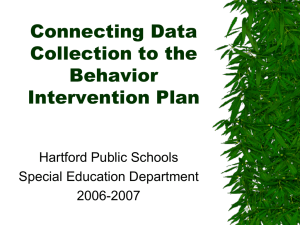Self-Monitoring Strategies
advertisement
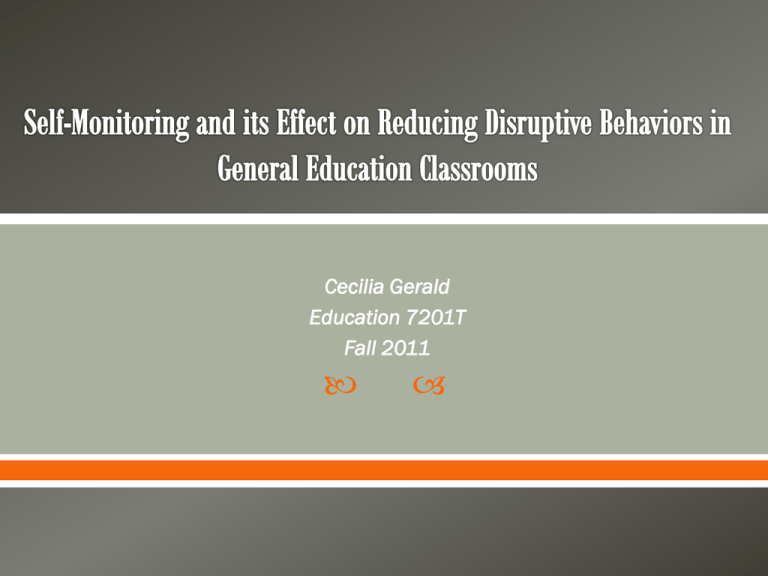
Cecilia Gerald Education 7201T Fall 2011 Statement of the Problem: Slide 3 Review of the Literature (Current Strategies): Slide 4 Review of the Literature (Pros): Slide 5 Review of the Literature (Cons): Slide 6 Research Hypothesis: Slide 7 References: Slide 8 Students with disruptive behaviors hinder the learning process for themselves and their peers (Smith & Rivera, 1995). Studies show teachers in general education classrooms have significant challenges managing students with disruptive behavior (Westling, 2010). Students with disruptive behaviors have a higher risk of being referred for special education services (DuPaul, 1998). Traditionally prevention and intervention measures are taken (Smith & Rivera, 1995). Traditional management is teacher-monitored and focuses on reinforcements from external sources (DuPaul, 1998). Studies have shown that students are able to use selfmanagement techniques effectively (Prater, 1994) Teaching students how to self-monitor has been effective for students in special and general education classrooms (Prater, 1994). Self-monitoring can be used for students at all grade levels. Self-monitoring relatively simple to implement and consumes less of teacher’s time with individual students. Majority of self-monitoring studies done in special education populations. Studies in general education classrooms are usually limited to very few students, therefore evidence cannot be generalized (Jull, 2009). Studies have not been conclusive over long-term periods (Jull, 2009). Training a group of 15 first grade students, at P.S. X in Brooklyn, New York, with disruptive behaviors of talking at wrong times and getting out of their seats to use selfmonitoring strategies to manage these behaviors will show a decrease in disruptive behaviors over a four-week period. Amato-Zech, N. A., Hoff, K. E. and Doepke, K. J. (2006). Increasing on-task behavior in the classroom: Extension of self-monitoring strategies. Psychology in the Schools, 43: 211–221. de Haas-Warner, Sarah J. (1991). Effects of self-monitoring on preschoolers' on-task behavior: A pilot study. Topics in Early Childhood Special Education, 11(2) DuPaul, G. J., & Hoff, K. E. (1998). Reducing disruptive behavior in general education classrooms: The use of self-management strategies. School Psychology Review, 27(2), 290. Jolivette, K., Patton, B., Ramsey, M. (2006). Students with emotional and behavioral disorders can manage their own behavior. Teaching Exceptional Children, 39(2), 14-21. Jull, Stephen K. (2009). Student behavior self-monitoring enabling inclusion. International Journal of Inclusive Education, 13(5), 489500. McConnell, M. E. (1999). Self-monitoring, cueing, recording, and managing: teaching students to manage their own behavior. Teaching Exceptional Children 32(2), 14-21. Prater, Mary A. (1994). Improving academic and behavior skills through self-management procedures. Preventing School Failure, 38(4), 5. Rafferty, Lisa A. (2010). Step-by-Step: Teaching Students to Self-Monitor. Teaching Exceptional Children, 43(2), 50-58. Smith, D. D., Rivera, D. P., (1995). Discipline in special education and general education settings. Focus on Exceptional Children, 27(5), 1-14 Westling, David L. (2010). Teachers and challenging behaviors: knowledge, views, and practices. Remedial and Special Education, 31(1), 48.
